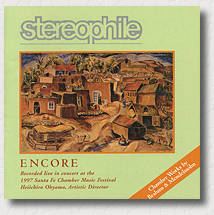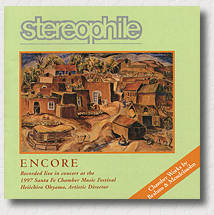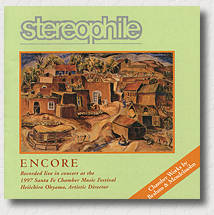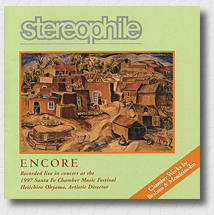
Encore: the 1997 Santa Fe Chamber Music Festival CD The Music
Encore: the 1997 Santa Fe Chamber Music Festival CD The Music

- Read more about Encore: the 1997 Santa Fe Chamber Music Festival CD The Music
- Log in or register to post comments




Recording and music production technology has seen enormous change in recent years. Engineers and producers now have unprecedented power to manipulate the tinest details in recordings using computers and other tools. But the process may be taking the life and soul out of music. Some feel that commercial recordings lack the spontaneity that makes live music so immediate and satisfying. Others prefer the "perfection."